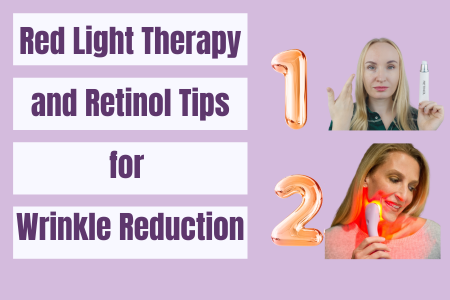As the quest for youthful, radiant skin continues to captivate beauty enthusiasts, innovative treatments like red light therapy and topical retinol have gained prominence. Both methodologies, when applied separately, are celebrated for their skin-transforming properties. However, many wonder if these two powerhouses can harmoniously coexist within one skincare regimen. This article delves into the compatibility of red light therapy and retinol, exploring their benefits, potential interactions, and tips for an optimal skincare routine.
First, let’s clarify what each treatment entails. Red light therapy (RLT) employs specific wavelengths of light to penetrate the skin, stimulating cellular processes that promote healing, rejuvenation, and anti-aging. It has been lauded for its ability to enhance collagen production, improve skin texture, and reduce inflammation. By functioning at a cellular level, RLT can energize mitochondria, the powerhouse of cells, resulting in a more vibrant complexion.
On the other hand, retinol, a derivative of vitamin A, is revered for its ability to accelerate skin cell turnover, diminish fine lines, and combat hyperpigmentation. By unclogging pores and promoting new cell growth, retinol helps maintain the skin’s elasticity and firmness. It is particularly acclaimed for its efficacy in combating the signs of aging and improving overall skin tone.
Now, the question arises: Can you do red light therapy with retinol? Indeed, the two treatments can complement one another splendidly. However, there are crucial considerations to keep in mind to ensure that this synthesis of therapies yields optimal results without adverse effects.
Firstly, it is essential to assess the timing of these applications. Because retinol can render the skin more sensitive, particularly during the initial weeks of use, it is advisable to use RLT either prior to applying retinol or on alternate days. This strategic pacing can help mitigate any potential irritation that might arise from combining these potent treatments.
Additionally, it is fundamental to consider the concentration of retinol being used. Higher concentrations may increase the likelihood of sensitivity, rendering the combination of treatments more complex. For those new to retinol, commencing with a lower concentration and gradually escalating can afford a gentler transition. This phased approach allows the skin to acclimate to retinol while reaping the benefits of RLT without overwhelming it.
Understanding the mechanics behind how these treatments interact can be enlightening. When red light therapy is administered, it can enhance the absorption of topicals applied subsequently. This synergy means that when retinol is applied after RLT, it may penetrate deeper into the skin, maximizing its efficacy. The biological mechanisms behind this involve improved microcirculation and cellular metabolism facilitated by the light therapy.
However, users should tread cautiously. RLT can temporarily increase skin permeability, making it more susceptible to irritation from potent actives like retinol. This is where personal experience plays a crucial role; monitoring the skin’s response is vital. Should irritation manifest, adjusting the usage frequency of either treatment might be necessary.
Moreover, it is critical to be aware of the cumulative effects of these treatments over time. While both red light therapy and retinol are celebrated for their anti-aging prowess, understanding their long-term effects on the skin is paramount. Users may notice initial improvements, such as refined texture and a more unified tone, but consistency is key. Regular sessions of RLT combined with disciplined retinol use can lead to remarkable skin rejuvenation. It is advisable to consult with a dermatologist to tailor a routine that addresses specific skin concerns and delineates an appropriate regimen.
In terms of practical application, setting up a balanced schedule can make incorporating both treatments into your routine seamless. For instance, one might designate mornings for retinol application, ensuring the skin has ample time to transition into its routine before sun exposure. Meanwhile, evenings could be reserved for red light therapy, allowing the skin overnight to recuperate and assimilate the benefits of both treatments.
It is also worth mentioning the significance of proper skincare post-therapy. After engaging in red light therapy, the skin may be in a more receptive state. Hence, layering on a hydrating serum or moisturizer post-treatment can amplify hydration and support the skin barrier function. This is particularly crucial when using retinol, as it can sometimes lead to dryness, especially for those who are still adjusting to its use.
Furthermore, individuals should be vigilant about sun protection. Retinol generally increases sun sensitivity; thus, a broad-spectrum sunscreen should become an unwavering ally in your skincare arsenal. This is especially pertinent following red light therapy sessions, as healthy skin should be shielded from potential UV exposure, which could negate the benefits received from both treatments.
In summary, the intertwining of red light therapy and retinol can harbor impressive anti-aging benefits, provided they are approached with care and consideration. By understanding each treatment’s properties and respecting your skin’s unique responses, it is entirely feasible to create a robust skincare regimen that maximizes the advantages of both therapies. Ultimately, the journey to achieving that coveted glow may well be enhanced by the thoughtful integration of these formidable skincare allies.
